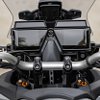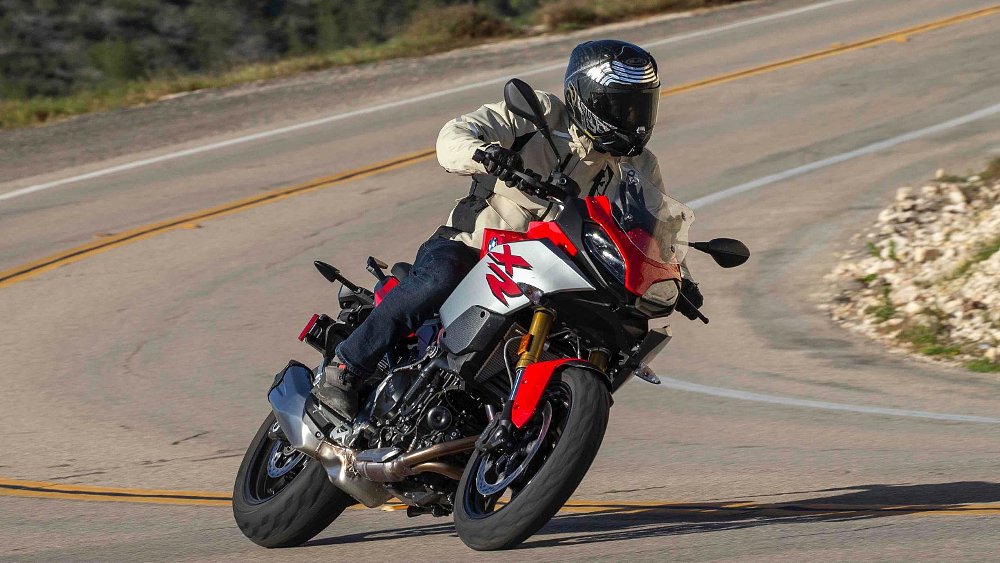As the price of a motorcycle rises, so do the expectations, and there aren’t many machines that have seen a meteoric rise in sophistication and price quite like Yamaha’s Tracer 9 GT.
This model originally came to the market as the FJ-09 back in 2015, with an MSRP of $10,490, and then grew to the Tracer 900, which sold for $13,000. The basic architecture of this Tracer 9 GT is the same, but the bike has grown in complexity and expense, to $14,899. As Lance so eloquently said in his first-look piece on this bike, it is “no frills, no longer.” Having ridden it, I’ve developed a simple love/hate relationship with it, and I’m not sure exactly how to feel. So, what follows is a Jekyll-and-Hyde set of observations. If one makes more sense than the other, you’ll know how your feelings about this new Tracer stack up.
The evolution
Yamaha’s basic recipe of using the FZ-09 and MT-09 platforms as a springboard for the FJ-09 and Tracer models continues here. In other words, the all-new MT-09 we rode earlier this year is the foundation for this new Tracer 9 GT. The bikes share the updated, 890 cc engine and exhaust, the frame with a lower headstock, upgraded brakes, lighter wheels, as well as handlebar clamps and footpeg brackets that can be adjusted to higher positions.
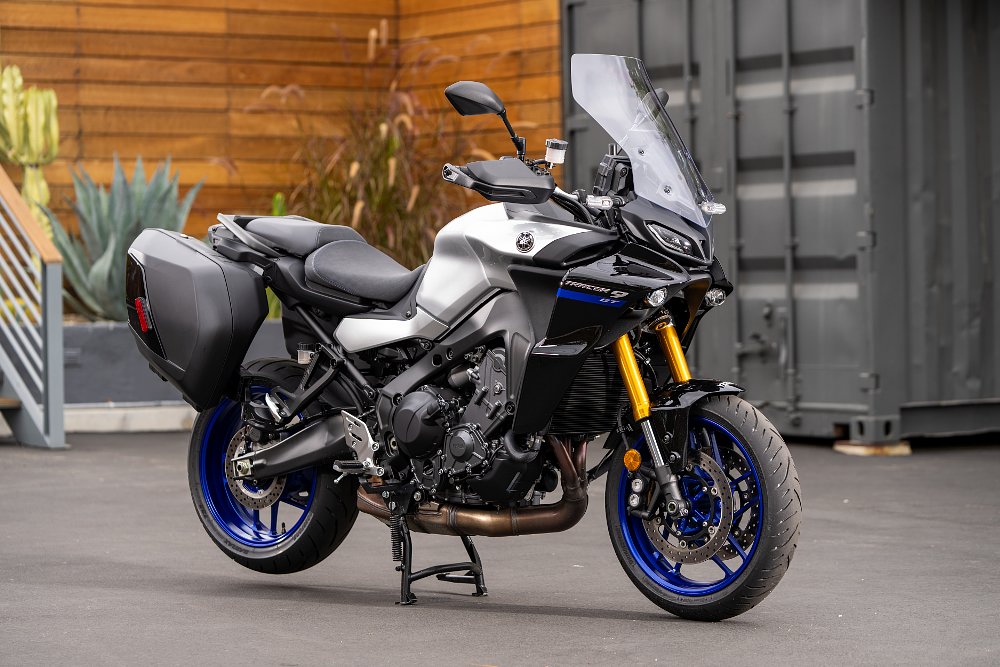
One of two important skeletal changes on this Tracer is the swingarm, which is 2.3 inches (60 mm) longer than the MT-09's, supporting the larger subframe and increasing the bike’s payload for carrying luggage and a passenger. The other big difference is the suspension — it’s still KYB hardware front and rear, but the Tracer swaps a manually adjustable fork and shock for KYB’s electronically adjustable units, which automatically modify the damping schedules (compression and rebound in the fork, only rebound in the shock) as the bike rolls down the road. Preload on the fork is adjustable with a wrench, while the shock gets a remote dial that can be cranked by hand.
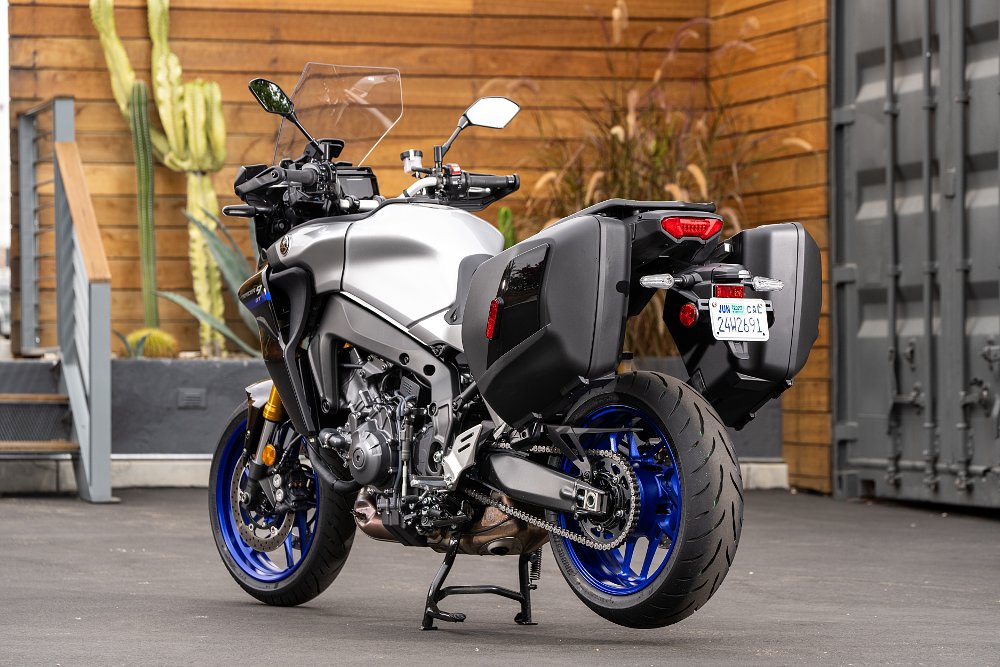
Electronically, this new Tracer cribs most of its suite of safety features from the MT-09, as well, including hardware like the six-axis IMU and up/down quickshifter. On the software front, four throttle maps can still be toggled on the fly, allowing the rider to choose between three different responses with full power and a fourth setting that is noticeably more gentle and cuts maximum thrust. Wheelie control (LIF, in Yamaha speak), slide control (SCS), and traction control (TCS) are bundled together and controllable by toggling through three umbrella modes, somewhat confusingly labeled “TCS.”
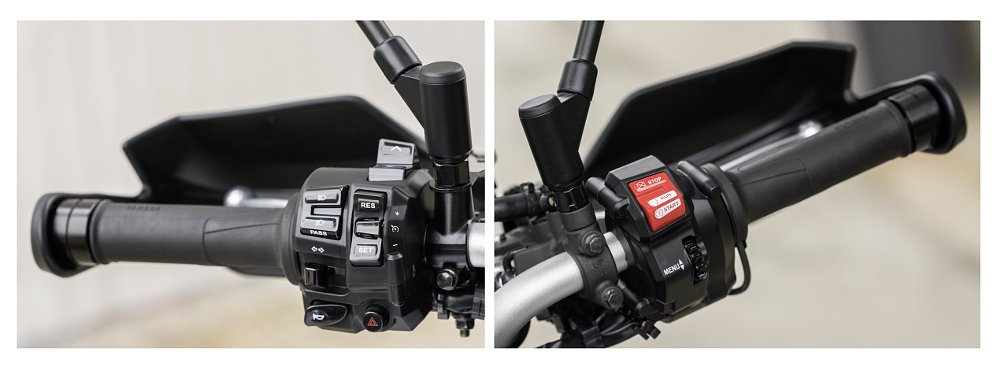
Modes 1 and 2 have the parameters preset, while a manual mode (“M”) allows the rider to dive into the menu to set each of the three systems to a preferred level that can later be selected, as a bundled “TCS” mode, on the main dash. The three systems can also be shut off entirely if the bike is stopped. Brake Control (ABS) has two settings — BC1, which is more lenient and BC2, which uses lean-angle information from the IMU to ramp up intervention as the bike leans over — but the system cannot be disabled.
The Tracer gets cruise control, along with two settings for the electronically adjustable suspension. Both suspension modes are automatic, with “A1” meant to keep the fork and shock fairly stiff and sporty, while “A2” is designed to loosen up the damping for a cushier ride. Full-color, TFT screens are obviously getting very cheap because the Tracer 9 GT uses two 3.5-inch units, mounted side by side in the cockpit, to display all of this information and control the settings. On the topic of settings, the Tracer’s windshield slides up two inches and the standard seat height of 31.5 inches can be raised to 32.5 (same as the MT-09) with a couple of minutes and no tools. Heated grips, adjustable to 10 different levels, are the proverbial cherries on top. Or maybe those are the cornering lights? There are so many features I’m running out of analogies.
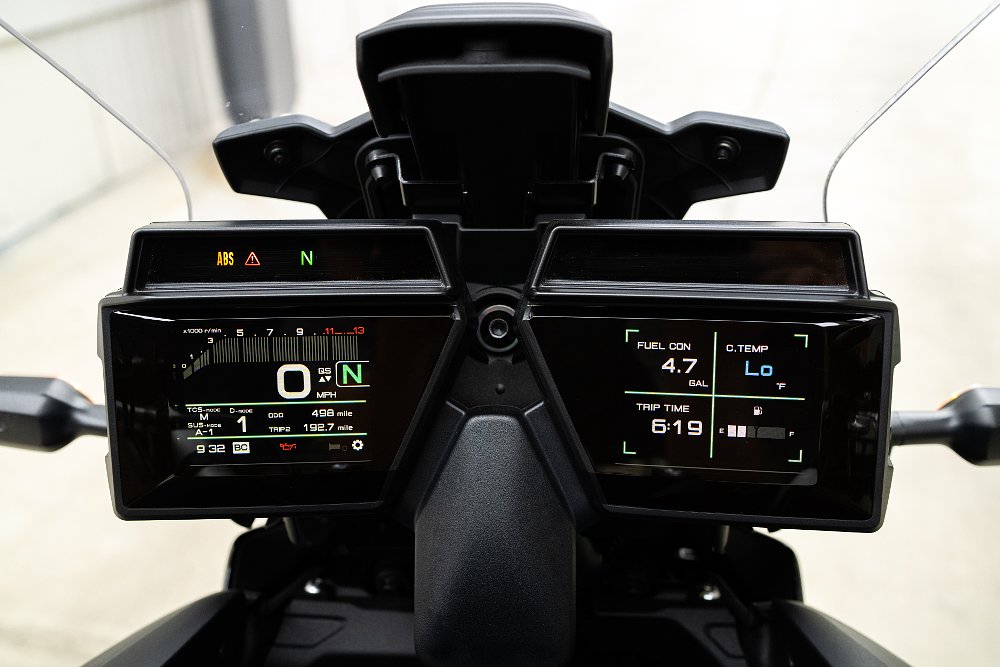
Considering this Tracer 9 GT has grown into existence from that first FZ-09 in 2014, the transformation is remarkable. Where the 2014 FZ-09 would rather flip over backwards than be polite, this new Tracer is downright mature. The thing is, being a lot better than the seven-year-old budget blaster that it’s based on isn’t good enough. A Tracer 9 GT is nearly double the price of the original FZ-09, and asking $15,000 for a motorcycle means a company needs to hit the target.
First review: Rose-colored glasses
Now we’ve come to the fork in the road. First, let me tell you how glorious this new Tracer 9 GT is to use. Many of the miles I rode for this test were wandering around city streets, navigating traffic and hopping between stop lights. The Tracer is mild mannered enough, with good clutch feel, and it’s really no surprise at this point that this engine feels better than good. There’s plenty of grunt on tap, it sounds great, and it still feels energetic and quick to rev even though the crankshaft has been made to spin up slower in this latest iteration. This powerplant has always been a three-cylinder gift to motorcycling and it’s still chock full of the character we’ve come to love.
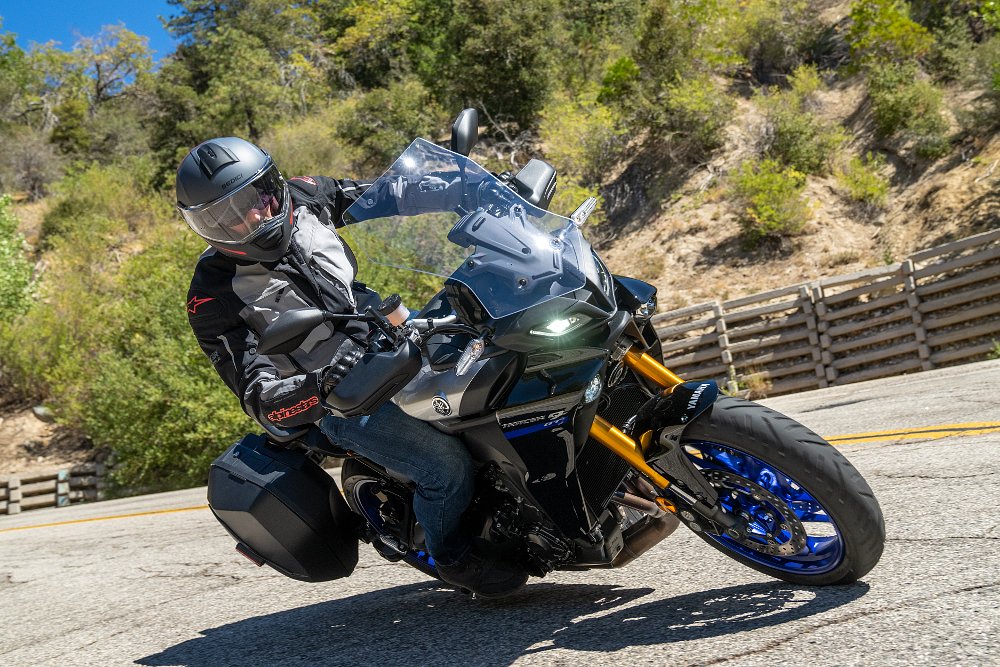
For feeling small enough around town, the Tracer logs miles on the slab like a champ, too. Sailing along at 75 mph settles the tachometer right around 5,000 rpm, which is smooth enough to cruise for hours but high enough in the revs that there’s good punch for a top-gear roll on. The rider triangle is an excellent mix of sporty command blended with all-day comfort, and the Ducati-style, pinch-and-slide windshield adjustment is terrific (even if the range is small). The throttle response is reasonable, the suspension is taut, the cruise control is intuitive, the brakes are good, and I barely even thought about the seat.
Last of all, this bike holds its own on a twisty road. It’s balanced and easy to ride, with no need to move around on the seat to get it to hold a line through a corner or flick from side to side. Trail braking? ABS has my back. Hoik a little wheelie in second gear by fanning the clutch out of a tight corner? Don’t mind if I do. The quickshifter is excellent as well, up and down, high rpm or low, hard on the gas or calmly approaching a stop sign.
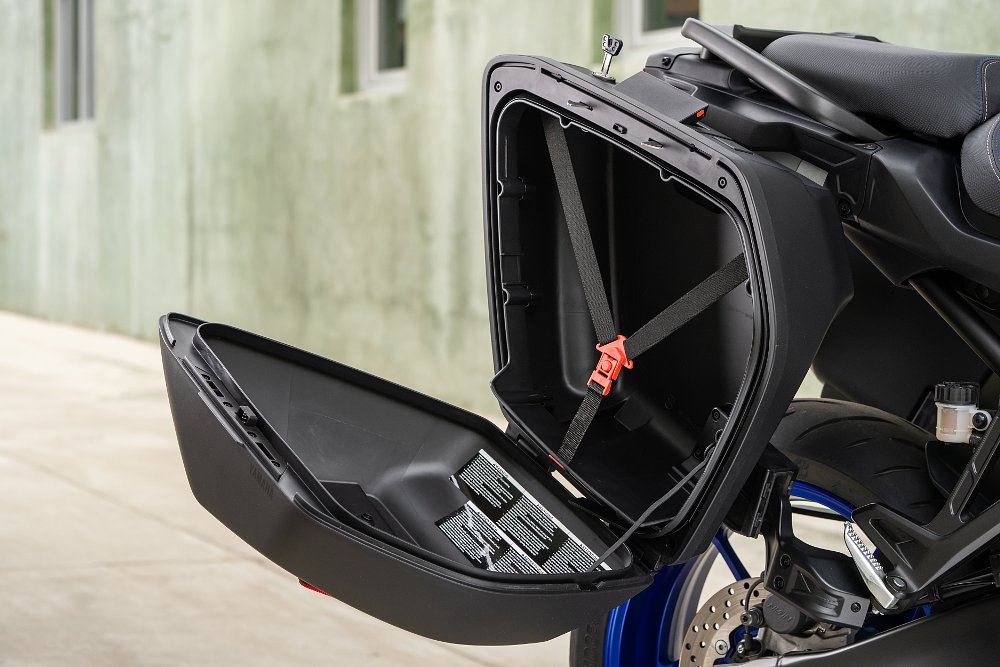
As if all of this wasn’t enough to love the new Tracer, I piled my lady on the back and even she was impressed. She noticed cutouts in the saddlebags that allowed her more foot room than she was expecting, the grab handles seemed to be in a good place, and she had the same note about the pillion seat; didn’t even think about it. That’s high praise. All of this while getting 40 mpg or above and letting out a sweet howl in the process. In many ways the new Tracer is everything you want it to be, and more.
Second review: The sky is falling
On the other hand, does anyone remember the two sequels to The Matrix? It’s not that they’re terrible movies, it’s just there’s no true element of wonder like the first time the story sunk in. Similarly, this three-pot Yamaha powerplant feels a little dumbed down in this use case. It conforms more and surprises less. Also working against the engine’s charm are all of the new technologies and features draped over this new bike, because it’s getting hefty. This Tracer 9 GT tipped the scales in the RevZilla West office at 491 pounds without saddlebags, which makes it about 30 pounds heavier than the original FJ-09 and around 75 pounds more than a current MT-09.
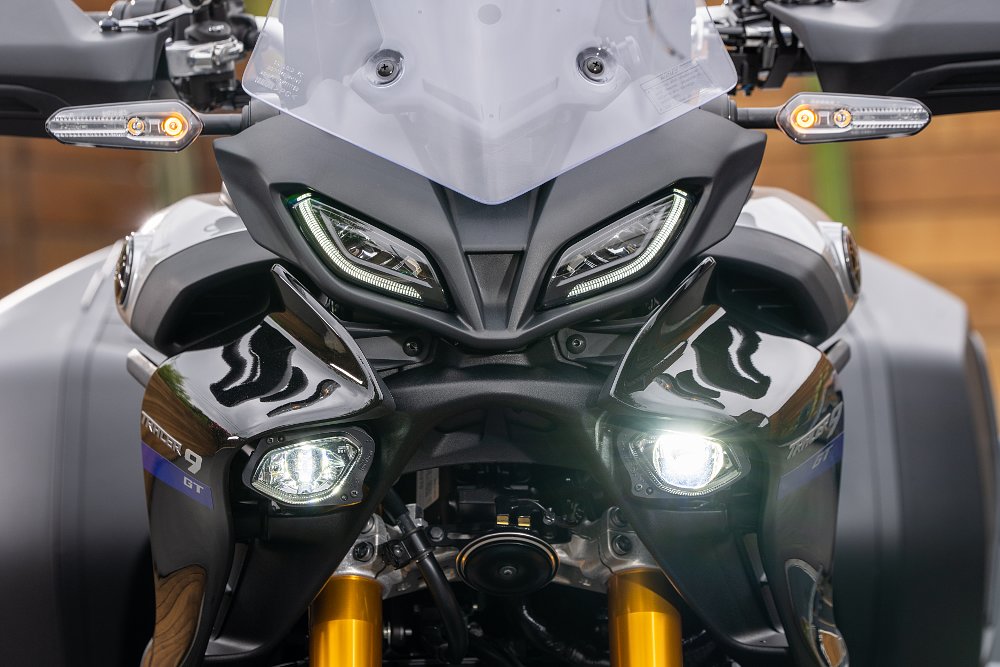
Then there’s the lengthened swingarm, which contributes to a wheelbase that’s almost 2.5 inches longer than a first-gen FJ-09 and makes the bike less prone to wheelies. That’s sad for hooligans who like that kind of thing, but more importantly it makes the bike feel slower. Adding to that, I think the transmission ratios are fine for the MT but a little tight for the Tracer. First and second gears have been made three percent taller in this iteration of the Yamaha triple’s drivetrain and I think the two top cogs could lean more toward loping along than having good roll-on power. That would improve gas mileage (not any better than the last KTM 1290 Super Duke I rode) and it would smooth out the vibrations for the passenger at 75 to 80 mph which, incidentally, are made worse by the fact that the rear pegs are bare metal.
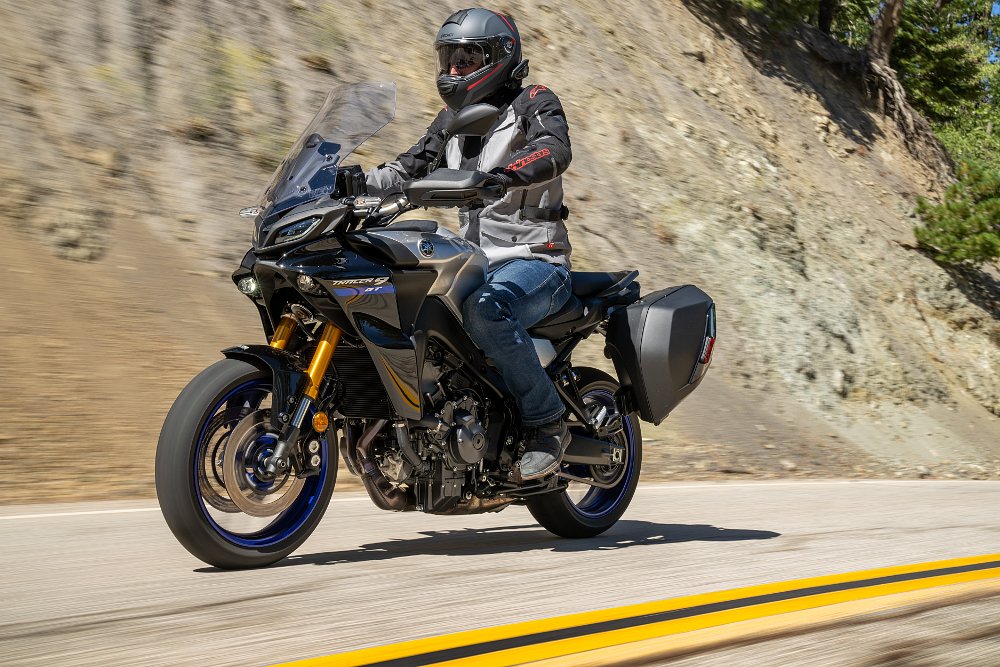
Next up, the electronically adjustable suspension, which is underwhelming. The two settings offered are both automatic, meaning the rider can never have manual control over any of the damping settings. I found the softer, “A2” setting to be my favorite while riding alone, even though the compression damping in the fork feels pretty harsh. With a passenger on board A2 was too soft in the rear, so I dialed in maximum shock preload and flicked the system to A1. That made the harshness in the fork worse while a big, lazy bump leading onto the freeway kicked my passenger out of the seat. Too much compression in the fork, not enough rebound in the rear, and nothing for me to do about it except vent to you.
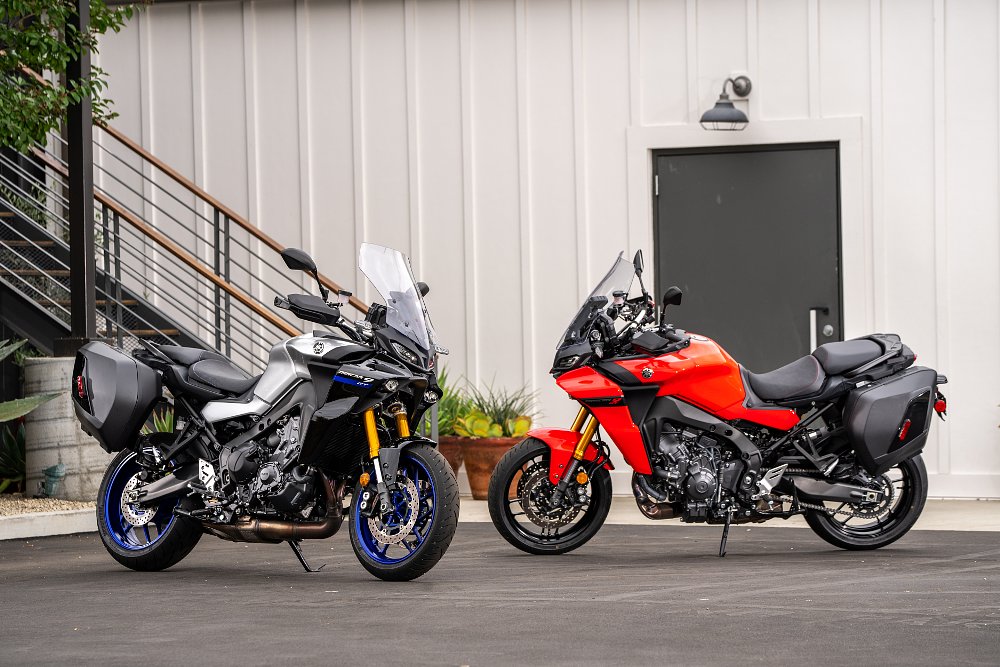
And finally, as a digestif, a flight of little problems with the many, many features. The saddlebags are generally great, for example, except that I only found two helmets in our office (a Shoei RF-1200 and an Arai Defiant, both mediums) that would fit, and even then I risked scratching the paint. It feels like making the bags fit most full-face lids wouldn't have made them much bigger, if at all, and would be a huge value add. A standard-issue center stand is brilliant, but I wish it didn’t hit my left boot while I was riding. Also, Yamaha went through all the trouble of engineering a unique and useful dash setup, with loads of information available to see and customize, and then somehow it’s pointed at my stomach, plagued with glare and not bright enough on a sunny day with a tinted visor. Usually it’s the opposite problem — huge, beautiful screens with dumb or lazy user interfaces — so it’s frustrating that Yamaha nailed the hard part and fumbled the easy part.
The bottom line
All of what I have told you above is true, I do solemnly swear, and frankly some of the conversations could go either way. The weight thing, for one — this bike is bigger and longer and heavier than ever, and as a result feels slower and less agile than all of its siblings and cousins in the Yamaha-triple family. Then again the new Tracer is still fairly light and pretty damned fizzy for a sport-touring bike with all of the state-of-the-art gizmos on board. More advanced than a Suzuki V-Strom 1050XT, and 80 pounds lighter than a Kawasaki Versys 1000 SE LT+.
Forced to give a binary grade to the Tracer 9 GT, it’s absolutely a thumbs up — it has a solid foundation, made better by the MT-09’s advancements. However, I need you to know that I’m a little wary of the things that disappointed me about this motorcycle, because it says to me that the aura and attitude of the machine has changed. Yamaha doesn’t want the Tracer to be an understudy of sport-touring anymore. The idea isn’t to surprise people with capability, but instead to own a place in a premium spotlight. To suddenly be cutting edge and luxurious, when the bike’s best quality has always been the spunky combination of value and performance, is a difficult pivot. Whether or not it worked is a matter of how your expectations match the Tracer’s new stature and price.
| 2021 Yamaha Tracer 9 GT | |
|---|---|
| Price (MSRP) | $14,899 |
| Engine | 890 cc, liquid-cooled, 12-valve, inline triple |
|
Transmission, final drive |
Six-speed, chain |
| Claimed horsepower | NA |
| Claimed torque | NA |
| Frame | Aluminum twin-spar |
| Front suspension | KYB 41 mm fork, adjustable spring preload, electronically adjustable compression and rebound damping; 5.1 inches of travel |
| Rear suspension | KYB shock, adjustable spring preload, electronically adjustable compression and rebound damping; 5.4 inches of travel |
| Front brake | ADVICS four-piston calipers, 298 mm discs with ABS |
| Rear brake | Nissin single-piston caliper, 245 mm disc with ABS |
| Rake, trail | 25.0 degrees, 4.3 inches |
| Wheelbase | 59.1 inches |
| Seat height | 31.9 / 32.5 inches |
| Fuel capacity | 5.0 gallons |
| Tires | Bridgestone Battlax T32 GT, 120/70-ZR17 front, 180/55-ZR17 rear |
| Measured weight | 509 pounds (491 without saddlebags) |
| Available | Now |
| Warranty | 12 months |
| More info | yamahamotorsports.com |









